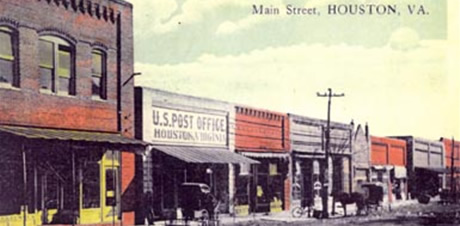A New Offering at the Master Gardener Plant Sale – Lotus Tubers!
By Carol Nelson

Caption for picture: This lotus bloom will emerge around August and delight the senses. Stop by the Master Gardener Plant Sale on May 7th to purchase a lotus tuber to plant in your garden.
The annual Master Gardener Plant Sale, set for Saturday, May 7th, 7:30 am to noon, is a great place to pick up healthy plants to add to your spring garden at low prices. Plant selections vary from year to year, but we always try to offer a selection of annuals, perennials, herbs and vegetables. This year, we are excited to have something different: lotus tubers that produce lush pink or white flowers and interesting floating leaves.
Lotus tubers will add a “wow” factor when planted in a container water garden. Originally found in shallow, murky ponds, these plants are very invasive and should not be allowed to spread into Virginia ponds, lakes or waterways. A water garden is easily started in early spring by setting up a large round pot (18 to 25 gallons with no holes or lined with a heavy rubber bag) on a patio or deck. The pot should be placed in a sunny corner and filled to within six inches of the top with heavy clay-based soil or water garden soil. This is one time that it is acceptable to use soil from your yard in a container planting. It’s best to avoid using regular potting mix that contains fertilizer because it will float when water is added and may cause algae.
Tubers should be handled very gently so as not to break or injure the fragile growing tips. Make a groove in the soil about two inches deep and lay the tuber with the cut end against the side wall and the growing tip sitting at a 45° angle. A small rock may be used to hold the tuber down as several inches of water is slowly added – be sure to use well water or tap water that has been allowed to sit for several hours to release the chlorine. As the plant grows, it will put roots down into the soil. Add water as needed to replace evaporation and to keep the plant submerged. Be sure to also add a Mosquito Dunk year-round.
Lotus plants are heavy feeders and should be fertilized every three weeks using fertilizer sticks or pond fertilizer tablets. Lotus may not bloom the first year after planting, but will continue to grow and put out more tubers and roots until going dormant in the fall. In Zone 7, water gardens can be left outdoors over the winter or brought into an unheated garage. Every two years from January through March, the lotus plant should be divided so that it does not overgrow the pot.
A symbol of prosperity and purity, the lotus is revered as a sacred flower in Egyptian, Indian and other Asian cultures. The seed can survive prolonged drought conditions, while parts of the plant are edible and used in traditional herbal medicines. Try something different in your garden this year – a container water garden featuring beautiful lotuses. Master Gardeners want to thank our friend, Kathy Laine of Scottsburg, for dividing her big pot of lotus tubers to share at our Plant Sale.














